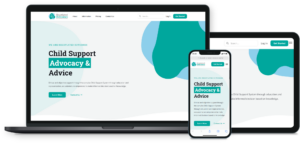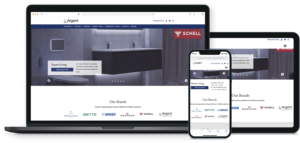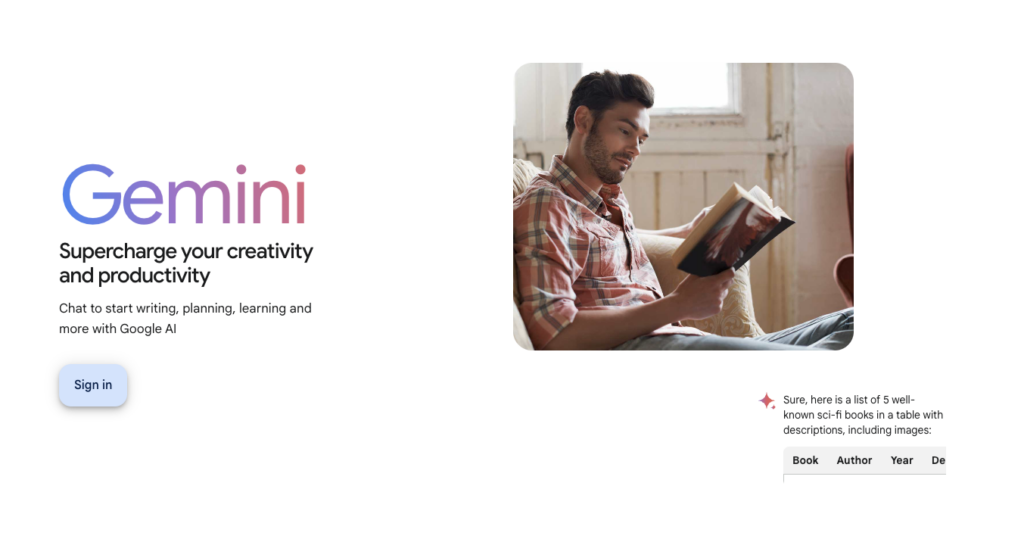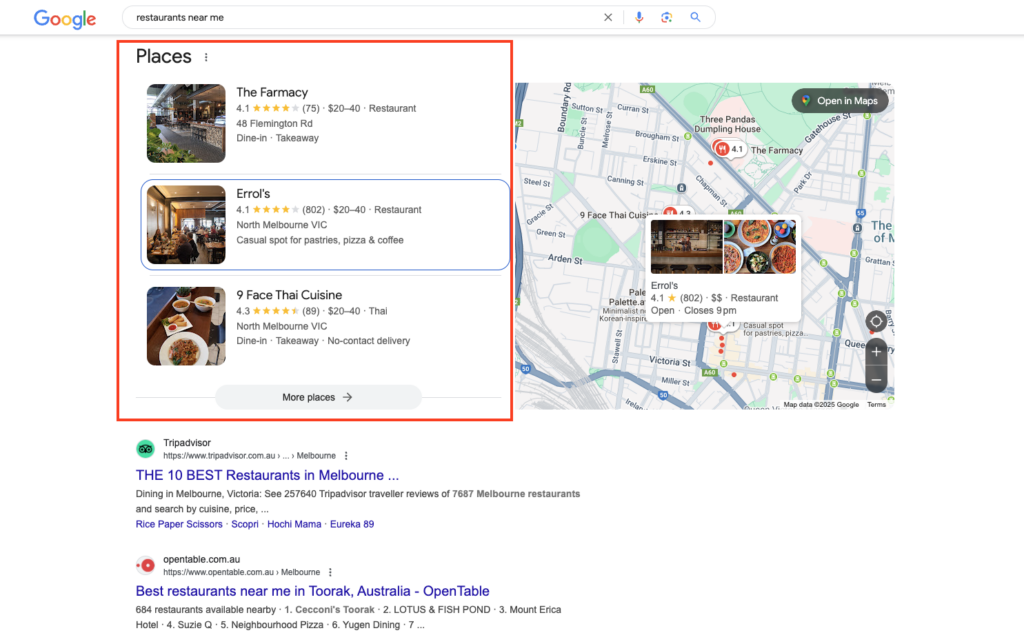How Much Does Website Development Cost In Australia?
You need a website, but the cost is making you hesitate. We get it.
The digital space is advancing, and these days it’s tough for a business to get by without a good website.
And like all good things, it comes with a price.
Website development is a process that combines technical and artistic effort to make your business look fantastic online, which means pricing can be a bit complex. But don’t worry! Our guide to all the costs you need to know about website development will give you a clear and detailed breakdown before you lock in the deal on your next website upgrade.
For a quick breakdown, a typical website can range from $10,000 to $50,000 or more, depending on factors such as CMS platforms, the number of pages, website features, functionalities, and more. However, a small business website with limited functionalities could cost you around $5,000.
As one of Australia’s leading website development companies, we’ve created the ultimate guide to help you understand all the costs involved in website development
Introduction
The digital landscape today has made significant strides in connecting customers with businesses compared to years ago. Back then, a recommendation from a mate or an ad in the newspaper would lead someone to a product—but now, it’s all happening online.
When your product or service is being searched for online, it’s crucial to have a website to stay competitive in the market.
However, the internet is flooded with countless websites, which raises the question: how can you make yours stand out in a sea of sites?
Well, the short answer is—a bloody good website. A well-designed website can help establish your brand’s presence online, and with the help of SEO, it can rank higher, putting your business right in front of your customers.
But how much does it cost to design and develop a quality website in Australia?
If you’re after a basic website with just enough pages to showcase the essentials of your business, prices typically cost you around $5,000. A more customised website with advanced features, however, can cost around $50,000 and go up by several hundred or even thousands of dollars. The cost varies based on several factors, including the size of the site, design layout, and the complexity of features and functionalities.
In this article, we’ll provide you with a detailed breakdown of the website development process and the costs that influence it.
The Process
The website development process is divided into four phases, each of which is interconnected. This means one phase can progress to the next once the previous phase is approved. As a result, it’s a closely integrated process that involves consistent collaboration between designers, developers, and stakeholders.
Here at Digital8, we use a productive and efficient approach that allows us to adapt to changes while ensuring the final product meets your budget and timeframe without compromising on quality.
Setting Expectations for Your Project – Discovery and Planning phase
Research before developing a site is essential. In our kick-off meeting, we take the time to understand your vision, requirements, and site wireframes before moving into design and development.
Once the initial project scope is approved, we break the project into sections called “sprints” to assist our clients with budget planning, forecasting, and investment. These sprints help set and track goals, timelines, and deliverables, which are shared with the client upon the completion of each sprint.
Balancing Aesthetics and Usability – Designing phase
Once the sprints are set out, our designers get to work on crafting the website. First impressions are crucial, and the User Interface (UI) and User Experience (UX) designs play a key role in shaping them. UI refers to the visual presentation of your site, while UX focuses on creating an engaging experience that encourages visitors to stay. We achieve this by delivering a seamless and tailored user journey.
Stronger UI and UX are favoured by search engines, meaning the better your site’s interface and experience, the more likely it is to be recognised by Google.
Bringing the Design To Life – Development and Testing phase
Once the design is approved, your Digital8 website development team in Brisbane will bring it to life. Throughout our development process, we assign a project manager to oversee each project, ensuring it stays on track and that updates are delivered consistently. We believe that a well-managed project is key to achieving the best results.
After the testing phase, the website will undergo two types of internal testing: Quality Assurance (QA) and User Acceptance Testing (UAT), confirming that it meets all requirements for a fully functional website. Then, it’s your turn as the client to test the site via a staging link before finalising the project’s completion.
Launching Your Site – Deployment phase
Finally, you’re ready to launch your site. Once you’ve completed UAT and approved the website, our teams will set up your live server and update your DNS to point to your new site. And that’s it—your website is ready to go!
Size matters – Breaking down the costs
Now that you understand how a website is developed, let’s walk you through the costs involved and what to expect at each stage of the website development process.
Small Basic Website
This is the most basic version of a website, typically including a home page, about us, contact us, services, and possibly a blog. If you’re opting for a WordPress site of this size, you could be looking at around $5,000. This price covers page template designs with a responsive web design layout. If you’d like additional functionalities, the cost will increase accordingly. Digital8, we specialised as a leading WordPress web design agency in Brisbane and Australia.
Medium-Sized Website
If you have a larger product or service, or are simply looking to grow your small-scale website, a medium-sized site would be suitable. These sites are slightly bigger than small-scale ones, but offer more functionalities, security features, pages, and other additions. Depending on your preferences and the size of the sitemap, a medium-sized website could start at $25,000.
Large-Scale Website
Large retail stores or government institutions may choose large-scale websites that offer space for a more complex build with numerous pages, features, and functionalities. We recommend Drupal for large-scale sites, as it is the preferred platform for most government agencies, which tend to be more information-heavy. Drupal also allows for greater website customisation. Large-scale websites can start at $50,000.
Here’s a general breakdown of website development pricing in Australia:
| Website size | Estimated cost (AUD) | Features and Capabilities | Best For |
| Small basic website | $5,000 |
| Startups, small businesses |
| Medium-sized website | $25,000+ |
| Growing businesses Medium scale Online Stores |
| Large scale website | $50,000+ |
| Large Scale Online stores Large enterprises |

What Impacts the Website Design and Development Costs
Website development is a process, and throughout that process, many changes and additions can occur that may impact your costs. Here are a few factors that could affect the cost of your website:
-
Number of pages
more pages mean more development and design work, as well as additional navigation requirements. If you need SEO content for the pages, this could incur extra costs, along with any additional costs associated with the complex structure of a high number of pages.
-
Design
A simple design with a custom template is easier and more affordable, but if you’re after a more customised design with a unique look, your prices might go up. So, if you’ve got a specific vision for your website, be prepared to pay a bit more.
-
Content
If you’re capable of creating your own authentic content, you can save a fair bit of money. However, the content you create must be organic and non-AI, as AI-generated content can negatively impact your SEO over time. So, if you’re looking for help with content creation, your costs may increase. Content writers typically charge between $150 and $500 per page, depending on the length and type of content.
-
SEO
SEO is the magic that ranks your site above all others. It means using relevant keywords based on your audience’s intent, organising your content in a clear and tidy manner, and generally sprucing up your page so Google won’t find any reason to push it down the rankings. Better rankings mean more customers and conversions for your business.
At Digital8, we’re all about delivering you a high-quality site, so we include a basic SEO setup in your website, curated by our SEO experts. We also offer monthly SEO strategies to ensure your site’s content is updated with trending keywords, and that your site is easily crawlable and supported with credible backlinks. However, these SEO efforts come with additional costs.
-
Extra functionality
Functionalities, especially advanced ones like e-commerce or custom integrations, take more time and effort to build, which results in additional costs. Other examples of extra functionalities include client portals, gated content, calculators, and web accessibility.
-
Maintenance and hosting
Every website requires ongoing maintenance and reliable hosting. Hosting ensures your website is accessible to users on the internet and will typically cost you between $100 and $200 a month.
Maintenance comes into play once your website is set up, so we recommend setting aside a portion of your budget (5-10%) for ongoing maintenance tasks.
Hidden Costs in Website Development
Apart from the obvious above, some hidden costs will affect the final price of your website design. Take a look below:
- Domain Name: Domain names come in various types, from Generic Top-level Domains (gTLDs), Country-Code Top-level Domains (ccTLDs) such as .com.au or .au domain names, Sponsored Top-Level Domains (STLDs), Internationalised Domain Names (IDNs), Brand Top-level Domains (Brand TLDs) to New gTLDs such as .guru, .blog, and .tech, which belong to specific industries. Therefore, it could range from $20 – $50/year.
- Hosting: Web hosting prices also depend on a few factors, such as the type of hosting (whether VPS, shared, or cloud hosting), security features, and others. The prices for hosting overall range from $10 – $50/month.
- SSL Certificate: SSL certificates come in three types: Single Domain SSL Certificate, Wildcard SSL Certificate, and Multi-Domain SSL Certificate. Based on the type and several other factors, it can range from $8 – $200/year.
- Website Maintenance: Website maintenance is necessary for the overall functioning of the website. However, for sites expecting more growth and traffic, more scalability requirements and better site performance are necessary. Based on this, prices may range from a good $500 – $2,000/year.
How Long Does It Take to Build a Website?
The timeline for website development depends on the type of website and the features and functionalities you choose to add. Here’s a rough timeframe for sites based on their type:
- Basic Website: A small or basic website with template designs and minimal features may take up to 2 – 4 weeks.
- E-commerce Website: An e-commerce website with unique branding, specific functionalities, and SEO optimisation may take up to 4 – 8 weeks.
- Custom Website: A website built from scratch to serve a larger brand requires a lot of attention, time, and detail, so it could take up to 3 – 6 months.
To sum it up
A website for your business is a great idea, but a good one will come with costs, no matter how you look at it. There are ways to work around and strategise your budget, but the final product will always reflect how much you’re willing to spend.
This is why we recommend treating the cost of website development as an investment. A high-quality, fully functional website is what Google’s algorithm favours, and your efforts will be recognised and ranked accordingly, leading to more traffic to your site and a significant boost in your business revenue.
If you are looking to invest in your website, our developers would love to talk to you! Digital8 is a Leading web design and development firm, providing the full spectrum of digital services – Google Ads in Brisbane, Search engine optimisation, social media marketing, App development and UI/UX design.
Frequently Asked Questions
1. How much does it cost to build a website in Australia?
A simple business web design cost can range from $2000 to $5,000, mid-range to larger sites beyond that. Although it largely depends on your choice of features, functionality, and design specifics.
2. What factors affect the cost of website development?
The main factors are the web design, functionalities, development method, hosting, and maintenance.
3. Is it cheaper to build a website by myself?
Yes, it is. DIY websites like Wix and WordPress are significantly cheaper and easier to build on your own than a custom-built site, however, custom-built sites establish a strong brand presence and functionality.
4. How much does ongoing website maintenance cost?
Ongoing maintenance from security updates, backups, and technical costs can range from $500 to $2,000 per year, covering SEO, bug fixes, site backups, security monitoring, and other services.
5. Should I hire an Australian web developer or outsource overseas?
If you hire a local designer, you can rely on quality control and consistent support. However, you may opt for outsourcing as it’s much cheaper.


